Comprehensive Guide to Sunblaster Fluorescent Lights
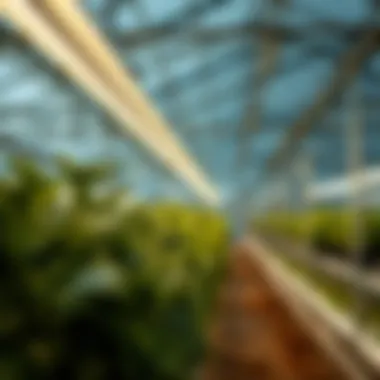
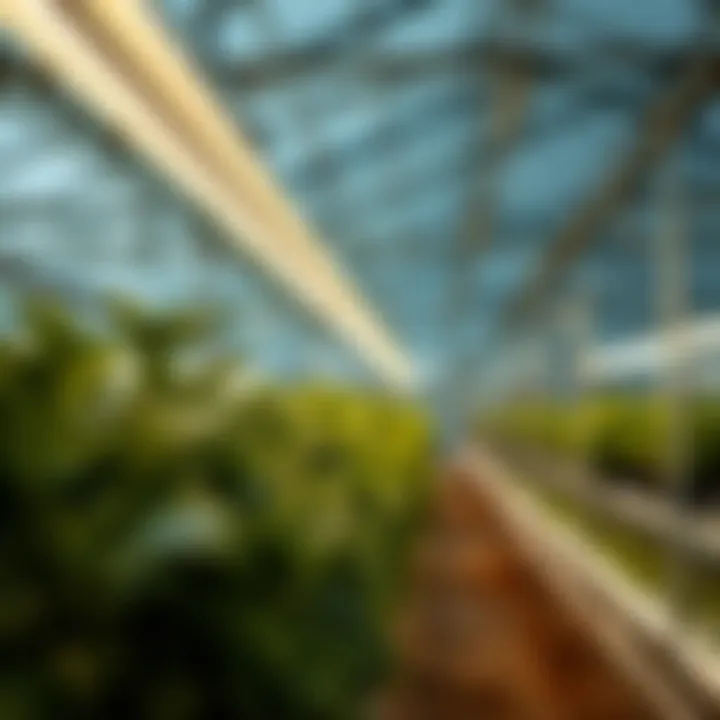
Intro
In today's fast-paced world of agriculture and horticulture, maximizing plant growth has become a paramount goal for many farmers and gardening enthusiasts. With the rise of innovative technologies, Sunblaster fluorescent lights have garnered attention for their effectiveness in enhancing plant health and yield. This article aims to provide a thorough exploration of these lights, detailing their significance, historical context, and practical applications in farming and gardening.
By diving into the details of Sunblaster fluorescent lights, readers will gain a better understanding of how these technologies can influence various farming practices. Whether you are a seasoned professional or just getting your hands dirty in your backyard garden, this guide is tailored to equip you with the knowledge needed to leverage artificial lighting to its fullest potential. With sustainable and efficient farming at its core, practical tips will be offered alongside a scholarly perspective, enhancing the overall experience for our discerning audience.
Prelude to Sunblaster Fluorescent Lights
Understanding Sunblaster fluorescent lights is crucial for anyone involved in agriculture and horticulture. These specialized lighting systems offer a range of benefits, from energy efficiency to targeted light spectra that promote plant growth. They shine brightly in environments where natural light might fall short, playing a significant role in seedling propagation and indoor gardening. A solid grasp of how these lights function and their unique characteristics can enhance growing practices considerably, making the connection between lighting and crop yield clearer than ever.
Overview of Fluorescent Lighting
Fluorescent lighting relies on the excitation of gas within a tube, generating ultraviolet light which, in turn, stimulates a phosphor coating inside the tube, producing visible light. Unlike incandescent bulbs that waste much of their energy as heat, fluorescent lamps are more efficient, converting most of the energy they use into light. They come in various sizes and power levels, allowing adaptability to different growing situations.
Key features of fluorescent lights include:
- Diverse Wattage Options: Available from low-wattage lights ideal for small spaces to higher wattage suitable for more expansive setups.
- Color Spectrum Variety: Different fluorescents emit various color temperatures that can be tuned to the growth stages of plants.
- Lower Heat Emission: They operate at cooler temperatures, reducing the risk of heat stress on delicate plants.
This versatility makes them a go-to for professionals and hobbyists alike.
Importance in Agriculture and Horticulture
In the realm of agriculture and horticulture, the importance of effective lighting cannot be understated. Sunblaster fluorescent lights contribute significantly to successful plant growth in several ways:
- Supporting Germination and Seedling Growth: The right light spectrum enhances photosynthesis during the critical early stages of plant development. This leads to stronger seedlings that are better prepared for transplanting.
- Year-Round Production: With the use of artificial lighting, growers can achieve consistent production regardless of seasonal changes. This factor is particularly valuable for indoor operations that are less reliant on natural sunlight.
- Customizable Light Conditions: Adjusting the color spectrum allows growers to mimic specific environmental conditions, optimizing growth for various plant types. For instance, blue light is beneficial for leafy greens, while red light supports flowering and fruiting.
"More light, more growth; it’s the simple equation that drives those in horticulture to choose the right lighting solutions."
Ultimately, the intersection of light and agriculture shapes not just the growth of plants but influences overall crop returns, making a comprehensive understanding of fluorescent lights an essential part of modern growing techniques.
Technical Specifications
Understanding the technical specifications of Sunblaster fluorescent lights is crucial for any farmer or horticulturist aiming to optimize their crop growth. The details behind wattage, output, and lifespan help users make informed decisions that can significantly impact plant health and energy consumption. Getting this right can mean the difference between a thriving garden and a lackluster yield.
Wattage and Output
Wattage serves as the backbone of fluorescent lighting systems. With Sunblaster, the wattage ratings typically translate directly into the amount of light produced and subsequently the energy consumed. For instance, a 26-watt bulb will deliver a robust output suitable for seedlings, while a higher wattage may be necessary for more mature plants or bigger growing spaces. Farming enthusiasts often find themselves asking, "How much light do I actually need?" For practical answers:
- Evaluate the types of plants being grown—some require more light than others.
- Consider the overall size of the growing area—larger spaces might benefit from multiple lights to achieve uniform illumination.
- Keep in mind that more wattage doesn't always mean better results; balance is key.
Color Spectrum Analysis
Plant growth relies heavily on the color spectrum lights emit. Sunblaster fluorescent lights are designed to provide a balanced spectrum that incorporates both blue and red wavelengths. Here’s why it matters:
- Blue light encourages vegetative growth—perfect for seedlings and young plants.
- Red light is crucial for flowering and fruiting stages—essential in the later phases of plant development.
A personal anecdote from a horticulturist friend emphasizes this: by utilizing specific bulbs that focus on these wavelengths, their tomato plants saw a remarkable boost in yield during peak flowering. Analysis of the color output from your bulbs can help you tailor your lighting setup to closely match the needs of your plants at different growth stages.
Lifespan and Durability
The lifespan of Sunblaster fluorescent lights stands as a testimony to their durability. These bulbs are built to withstand the rigors of agricultural use, often lasting longer than standard bulbs. The lifespan can vary based on how frequently they are cycled on and off, as well as how well they are maintained.
- Regular cleaning and proper ventilation can extend their usability.
- There's a financial aspect to consider as well—higher durability translates to fewer replacements and less down time for crops.
~"The less time you spend changing bulbs, the more time you can devote to what really counts: nurturing your plants."~
Overall, a sound understanding of these technical specifications not only enriches one’s farming practices but also ensures that each blooming flower or ripening fruit benefits from the best lighting conditions possible.
Advantages of Sunblaster Fluorescent Lights
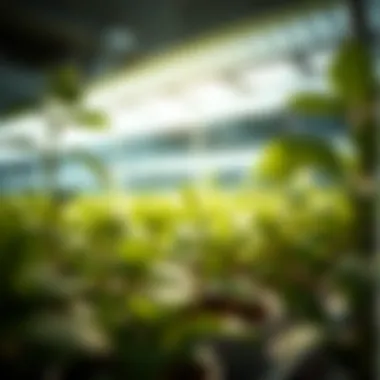
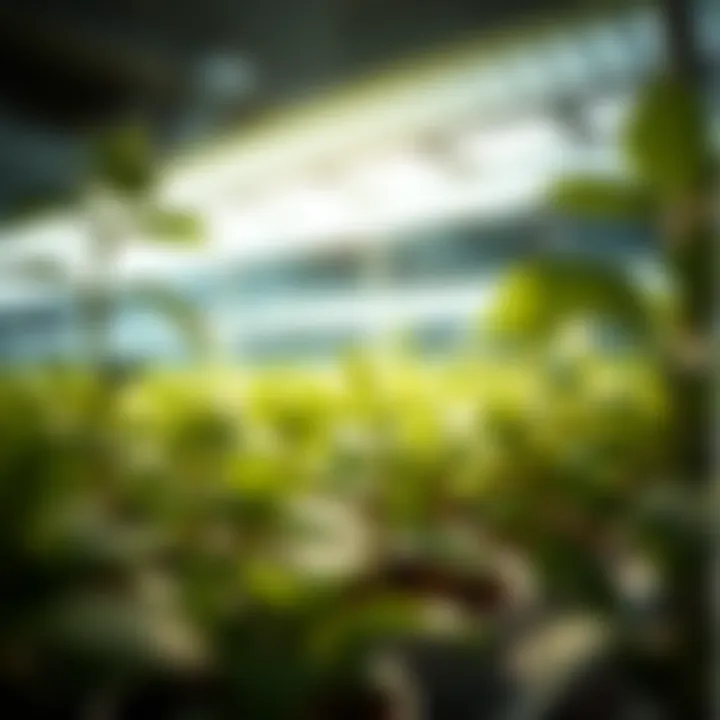
Sunblaster fluorescent lights stand out for a variety of reasons that are fundamentally beneficial in the contexts of agriculture and horticulture. This section delves into the various advantages these lights offer and how they align with modern farming practices.
Energy Efficiency
One of the most compelling reasons to consider Sunblaster fluorescent lights is their energy efficiency. Unlike traditional incandescent bulbs, fluorescent lights utilize a fraction of the electricity to produce the same amount of light. The compact design allows growers to fit them into smaller spaces without sacrificing output. Many farmers have noted that by switching to Sunblaster lights, they're seeing reductions in their energy bills—a welcome sight during harvest season. They run cooler too, reducing the load on plant cooling systems during warmer months.
"Energy savings of up to 75% make a significant difference in both utility costs and environmental impact."
Moreover, this efficiency not only benefits the grower’s pocket but also aligns with sustainable practices that are becoming increasingly crucial in agriculture today. Growing plants under these lights is not just a matter of aesthetics or yield. It's partly about being smart with resources.
Versatility in Application
Sunblaster fluorescent lights are designed with adaptability in mind, making them suitable for various applications. Whether you're growing herbs in your kitchen, nurturing seedlings in a small greenhouse, or managing large-scale crop setups, these lights can accommodate diverse needs. Their ability to work well in different growth stages is another feather in their cap.
You can use them for:
- Seed germination
- Growing leafy greens indoors
- Providing supplemental lighting in greenhouses
- Supporting flowering plants in controlled environments
Growers often appreciate the simplicity of installation. Whether positioning them vertically or horizontal, you can quickly set them up to meet your unique layout. This versatility doesn’t just make them practical; it enhances creativity in farm design, allowing for innovative growing solutions.
Enhanced Growth Potential
Research has shown that Sunblaster fluorescent lights can positively influence plant growth. Their spectrum closely mimics natural sunlight, especially crucial during the early stages of plant development. Many experienced horticulturists have reported that seedlings grown under these lights develop stronger stems and deeper root systems than those grown in insufficient light.
The balanced light spectrum supports processes such as photosynthesis effectively, ensuring optimal nutrition transfer in plants. You might notice vibrant leaf colors and improved flowering patterns when using these lights consistently.
In many cases, utilizing Sunblaster lights has led to earlier harvests, ultimately allowing growers to take advantage of market timing. This competitive edge is invaluable in today's fast-paced agricultural environment.
In summary, the advantages of using Sunblaster fluorescent lights are multi-faceted, encompassing energy savings, broad application versatility, and enhanced growth outcomes. Each benefit accrues to larger outcomes: increased productivity and sustainability, foundational principles for modern farming.
Limitations and Considerations
In exploring the benefits of Sunblaster fluorescent lights, it is equally crucial to delve into their limitations and considerations. While these lighting solutions have transformed agricultural and horticultural practices, they come with certain setbacks that must be acknowledged to maximize their effectiveness. Understanding these areas can help growers make more informed decisions, ensuring that they can address challenges head-on rather than falling into pitfalls unprepared.
Heat Emission Issues
Fluorescent lights, while generally cool to the touch during operation, do produce some heat. This can become problematic in tightly sealed environments where excessive heat accumulation might stress plants. For instance, young seedlings are particularly sensitive to temperature fluctuations, and elevated heat can lead to water loss through increased transpiration. If growers are not diligent, they might find themselves needing to monitor temperature levels constantly, using fans or vents to ensure air circulation.
"Heat management is a key aspect of successful indoor gardening. Even a little extra warmth can make a world of difference to sensitive plants."
Growers typically find that placing the lights at an optimal distance from the plants can mitigate heat issues. However, this requires ongoing adjustments, especially as plants grow taller. Thus, while fluorescent lights are fantastic in many contexts, heat emission can induce extra labor and management complexities that must be factored into the planting schedule.
Initial Setup Cost
When considering Sunblaster fluorescent lights, initial setup costs can deter some would-be growers. While fluorescent lighting is often less expensive upfront compared to other lighting technologies, such as LEDs, the cumulative costs for fixtures, bulbs, and necessary supports can add up quickly. For instance, the cost of quality ballasts and reflectors—which enhance light distribution—may represent a sizeable investment.
Moreover, there’s also the question of ongoing maintenance expenses. Over time, bulbs lose brightness and efficiency and will need to be replaced. Savvy growers will want to factor these expenses into their budgets when planning a horticultural setup. Balancing initial outlays with the long-term benefits is critical; this way, decisions can be made with a clear price-to-value perspective in mind.
Limited Light Penetration
Another consideration lies within the limited light penetration typical of fluorescent systems. While these lights provide even coverage across the plants receiving direct light, they struggle to reach deeper foliage in denser setups. In situations where plants are closely spaced, only the upper leaves receive substantial light, potentially causing uneven growth.
In greenhouse settings or vertical gardens, those lower plant layers might suffer from inadequate light exposure. This can lead to underdeveloped foliage and reduced yields, as essential lower leaves may not receive enough energy for photosynthesis. A common remedy is to stagger plant heights or integrate supplemental lighting; this adds more elements to infrastructure and cultivation planning.
Understanding how these limitations function within one's specific growing scenario is key to harnessing the full potential of Sunblaster fluorescent lights. Each grower will have unique challenges to navigate, making a mindful approach to lighting selection crucial for ensuring fruitful plant growth.
Optimal Setup for Usage
When it comes to using Sunblaster fluorescent lights effectively in agriculture and horticulture, setting them up properly is crucial. An optimal setup not only maximizes the lighting efficiency but also cultivates an environment where plants can truly flourish. Here, we will explore specific elements that contribute to an effective arrangement, the benefits of these elements, and key considerations to keep in mind.
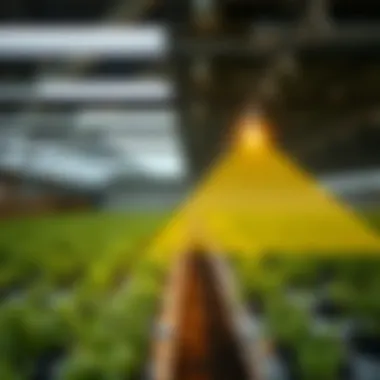
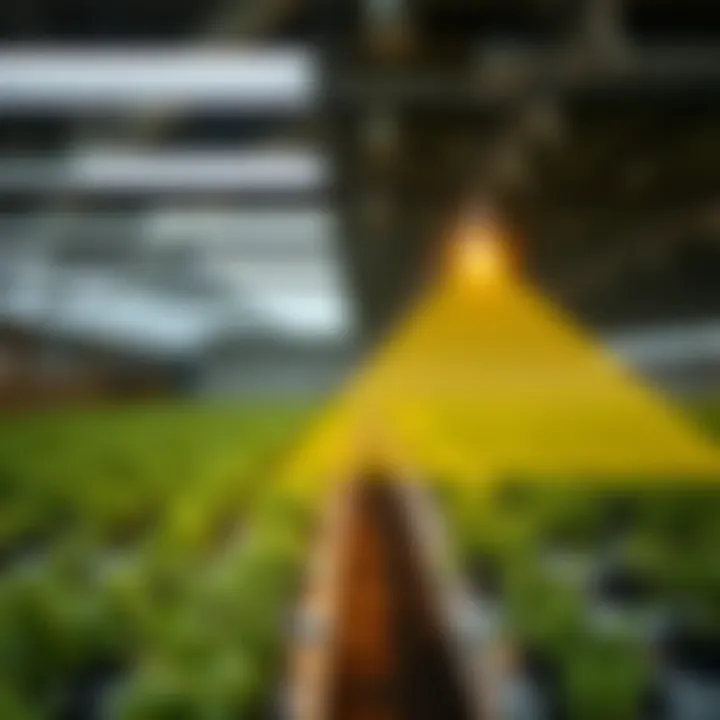
Recommended Placement Techniques
Placement techniques play a pivotal role in ensuring that plants receive the light they require without any hindrance. An effective strategy involves:
- Height Adjustment: Positioning the lights at the right height is essential. Generally, keeping them 12 to 24 inches above the plants provides a good balance between light intensity and plant safety.
- Spacing: Distributing the lights evenly across the growing area helps ensure uniform light exposure. Whether using one or multiple fixtures, a distance of about 24 inches between each light unit can enhance coverage without creating shadowy spots.
- Tilt and Angle: Adjusting the angle of the fixtures can direct light more precisely onto plants. A slight tilt downward allows for better penetration into the plant canopy, benefiting lower leaves that might otherwise receive inadequate light.
- Reflective Surfaces: Utilizing reflective surfaces like white walls or specialized grow tents enhances the effectiveness of the lighting. This setup bounces light back onto the plants, reducing energy consumption and improving overall light distribution.
These placement strategies not only improve growth but also promote consistent harvesting by providing the right conditions throughout the plant’s lifecycle.
"Proper light placement can transform a standard crop into a thriving one, making all the difference in productivity and plant health."
Adjusting Light Duration and Timing
Light duration and timing are integral aspects of the horticultural practice that greatly affect plant growth. Adapting these variables to meet the specific needs of different plants can lead to remarkable results. Here’s how:
- Duration: Most plants benefit from between 12 to 16 hours of light each day, depending on their growth stage. Seedlings may need longer light periods to promote robust development, while flowering plants may require a balance of light and dark to boost their blooming potential.
- Timing: Establishing a consistent lighting schedule mimics natural light cycles and can enhance the health of the plants. Using timers helps maintain an automatic routine, allowing growers to focus on other critical operations. For instance, a timer that switches on lights at dawn can align perfectly with the plants’ natural biological rhythms.
- Photoperiod Adjustments: Some plants are sensitive to the length of daylight. For instance, long-day plants thrive with extended periods of light, while short-day plants require longer periods of darkness to initiate blooming. Monitoring these needs can optimize growth cycles and yield exceptional results.
Keeping these factors in check not only leads to healthier plants but also promotes a more efficient use of energy, which is particularly essential for those engaged in sustainable agricultural practices. By understanding and implementing effective light duration and timing strategies, growers can create a balanced environment conducive to thriving crops.
Sustainable Practices with Sunblaster Lighting
In today's world, where every action we take counts towards either the wellbeing of our planet or its degradation, sustainable practices in agriculture have become paramount. Using Sunblaster fluorescent lights is a step in aligning with eco-friendly approaches. This section delves into how these lights can play a significant role in reducing carbon footprints and how they can integrate with other sustainable technologies.
Reducing Carbon Footprints
Reducing carbon footprints is crucial for any grower seeking sustainability. Sunblaster fluorescent lights are not just about growing plants; they are also about growing them in a way that is gentler on the Earth. Here’s how these lights contribute to that goal:
- Energy Efficiency: Sunblaster lights are designed to use less power compared to traditional lighting solutions. This means lower energy bills and less demand on power plants, which often generate electricity from fossil fuels.
- Longevity: These lights have a longer lifespan than conventional options, decreasing the frequency of replacements. This lifespan reduction translates to fewer materials consumed and reduced waste in landfills.
- Lower Heat Output: Sunblaster bulbs emit less heat, which means less energy required for cooling systems in greenhouses or grow rooms. By managing internal temperatures more efficiently, growers can maintain optimal conditions without cranking up energy use.
"Every little bit counts, and when it comes to sustainability, using fewer resources adds up to a lot of good."
Integrating with Other Sustainable Technologies
Adopting Sunblaster fluorescent lights opens doors to further integration with other technologies aimed at sustainability. Combining multiple eco-friendly solutions can amplify results in areas like energy savings and carbon reduction. Here are a few ideas:
- Solar Panels: By using Sunblaster lights in conjunction with solar energy systems, growers can entirely rely on renewable energy sources. This synergy allows for a truly green setup, maximizing productivity while minimizing environmental impact.
- Hydroponics: When paired with hydroponic systems, Sunblaster lights provide the necessary illumination without the additional heat that can disrupt water temperatures. This not only saves energy but can also lead to faster growth rates.
- Automated Systems: Integrating lighting control with automated systems allows farmers to optimize light usage based on plant needs. By adjusting light intensity and duration intelligently, energy consumption is further reduced.
Incorporating Sunblaster lighting into agricultural practices isn’t simply a move toward modernization; it represents a commitment to nurturing the Earth while reaping the benefits of enhanced plant growth. By embracing these sustainable practices, farmers can lead the way toward a more responsible future in agriculture.
Comparative Analysis with Other Lighting Options
In the world of horticultural lighting, understanding the differences between various options is crucial for anyone serious about maximizing crop growth and efficiency. When considering Sunblaster fluorescent lights, it’s helpful to compare them with other popular technologies like LED and HID lighting. These comparisons not only illuminate the benefits and limitations of each type but also assist growers in making informed decisions tailored to their specific needs.
LED Lights vs. Fluorescent Lights
LED (Light Emitting Diode) lights have gained a lot of traction in recent years. Many growers are turning to them for a range of reasons:
- Energy Efficiency: LED lights are known for consuming less power while providing the same light output as fluorescent. This lower energy consumption translates to reduced electricity bills.
- Lifespan: LEDs typically boast a lifespan of up to 50,000 hours, compared to fluorescent lights which may last only around 10,000 hours. This longevity can mean fewer replacements!
- Light Spectrum: LEDs can be manufactured to emit specific wavelengths, which makes them versatile for various growth stages. With fluorescent lights, the spectrum is more generalized.
However, fluorescent lights like those from Sunblaster also have their merits:
- Affordability: Generally, fluorescent lights have a lower initial cost than LED systems, making them more accessible for smaller growers or beginners.
- Proven Technology: The technology behind fluorescent lighting is well-established and understood, which can give some growers peace of mind.
- Abundance of Options: A wider variety of fluorescent tubes and fixtures may provide specific lighting solutions tailored for different plant types or growth phases.
"Choosing the right type of lighting can shape the success of your agricultural endeavors — it pays to be informed."
HID Lighting Solutions
High-Intensity Discharge (HID) lights, such as Metal Halide and High-Pressure Sodium lamps, are another viable option in the lighting sphere. Comparing these to Sunblaster fluorescent lights reveals several critical differentiators.
- Brightness: HID lights are generally much brighter, which can be advantageous for larger operations needing to cover more significant growing spaces. However, such brightness brings its own challenges.
- Heat Production: HID systems emit a considerable amount of heat. This can necessitate additional cooling solutions, complicating setup and increasing costs. Sunblaster fluorescent lights, in contrast, produce less heat, allowing for more straightforward management of room temperatures.
- Setup Complexity: HID setups can be more complex due to the need for ballasts and reflectors, whereas fluorescent systems are typically plug-and-play, making them easier for beginner growers or those with simpler setups.
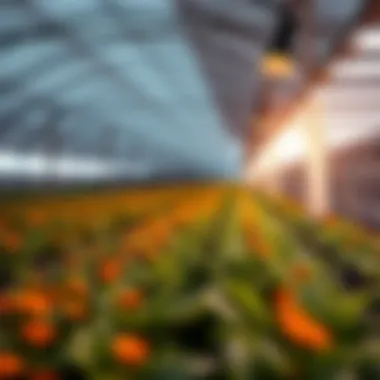
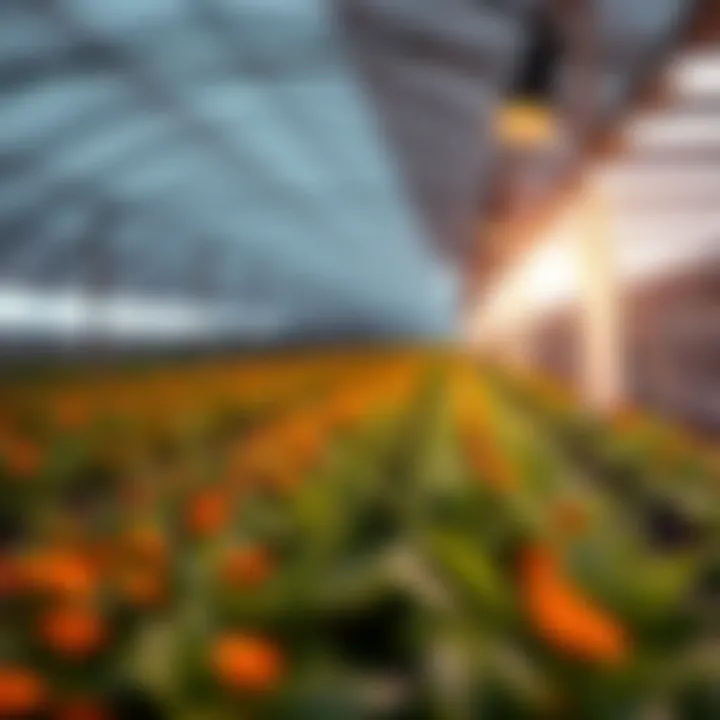
End of Comparative Analysis
The choice between Sunblaster fluorescent lights, LED technology, and HID solutions involves weighing factors like cost, energy consumption, and space requirements. Understanding your unique situation and objectives is paramount to selecting the most effective lighting strategy. Each lighting option has its specific purpose, with the ultimate goal being healthy plant growth and robust yields.
User Experiences and Case Studies
The narrative surrounding the use of Sunblaster fluorescent lights in agriculture and horticulture becomes richer with real-world experiences and case studies. These accounts provide insight into how these lights perform under various conditions and practices extensively in the agricultural sector. When potential users hear from their peers who have encountered both success and challenges, they may feel more equipped to make informed decisions based on tangible evidence rather than just theoretical claims.
The importance of this section lies not only in showcasing how Sunblaster lights can enhance growth and production but also in learning from the shared experiences of others. Jointly, success stories and lessons learned offer a tapestry of knowledge that fosters better practices among growers. Here, we highlight two prominent aspects: the motivational success stories that act as a beacon for others and the lessons that can save both time and resources.
Success Stories from Growers
Without a doubt, the success stories from growers illuminate the advantages of Sunblaster fluorescent lights vividly. A significant number of local farmers have testified to notable improvements in their crop yields. For instance, one suburban gardener who struggled with inadequate lighting conditions reported a transformation in her growing outcomes after integrating these lights into her setup. She initially faced challenges with limited sun exposure due to her location but experienced an astonishing difference in her seedlings’ growth rate. By optimizing light placement, she achieved vibrant greens that thrived better than ever before, producing richer harvests than she had anticipated.
Another intriguing account comes from a commercial greenhouse operator who implemented Sunblaster lights as a part of their strategic lighting plan. Prior to this, their reliance on traditional lighting options limited their operational hours and resulted in high energy costs. By switching to Sunblaster, they reported a significant decrease in monthly bills while seeing an increase in growth speed and consistency across various plants. By leveraging the lights’ efficient energy consumption and unique color spectrum, this grower successfully reduced their carbon footprint while enhancing product quality.
These stories aren’t isolated. They exemplify a broader trend where growers across various regions are beginning to embrace fluorescent lighting as a crucial part of their agricultural methodology.
Lessons Learned from Implementation
Even the best-laid plans can run into unforeseen challenges. Many growers have shared insights that speak to the importance of adaptability when integrating Sunblaster fluorescent lights into their systems. One common theme that emerged was the initial trial and error associated with light placement and duration.
A case in point involves a small-scale organic farm that rushed into installing the lights without a proper plan. They quickly learned that poor positioning could lead to uneven growth among plants. It’s a classic example of how not taking the time to evaluate the specific needs of different plant species can result in wasted resources. Collectively, growers recommend taking a measured approach, utilizing a simple trial phase that enables adjustments based on specific crop responses to lighting.
Moreover, the feedback regarding initial setup costs is prevalent among growers. While many initially expressed concern over the upfront investment, the long-term savings in energy costs often eclipse this issue. Growers who took the plunge found that, with careful planning and efficiency, they could recoup their investments relatively quickly, sometimes within a single growing season.
Future Trends in Horticultural Lighting
The realm of horticultural lighting is experiencing a thrilling evolution, one that accommodates the demands of modern agriculture. With the increasing awareness of sustainable practices, the future of horticulture lighting is not just about providing light; it's about boosting efficiency, sustainability, and plant health. The relevance of this topic cannot be overstated, especially given the challenges posed by climate change and urbanization. Understanding future trends in this field helps agricultural enthusiasts prepare for what's to come, ensuring they stay ahead of the curve.
Technological Advancements
Technological progress is at the forefront of horticultural lighting, shaping the ways growers approach their lighting systems. One exciting advancement is the development of smart lighting systems that integrate IoT (Internet of Things) technology. This means that grow lights can be automatically adjusted based on real-time data about plant growth, environmental conditions, and even energy consumption.
Think about it: imagine a system that can change the intensity of light as the sun starts to go down or shift color spectrums depending on the growth stage of plants. This level of adaptability can lead to significantly enhanced growth rates and yield quality. Other innovations include LED technology that provides a more energy-efficient alternative to traditional fluorescent lights while emitting wavelengths specifically tailored to optimize photosynthesis, thus promoting healthier plants.
Moreover, developments in lighting materials are also noteworthy. Recent materials used in light fixtures contribute to better heat management, which is essential for maintaining ideal growing conditions. Such improvements lend a hand in addressing the previous limitations of heat emission associated with fluorescent lights. The integration of such advanced technologies into everyday farming practices holds the potential to revolutionize agricultural productivity altogether.
Potential Research Areas
While significant strides have been made, there's still an ocean of unexplored research areas that could shape the future of horticultural lighting. For instance, investigating the relationship between specific light wavelengths and their effects on various plant species can unveil crucial insights. Different plants might have diverse optimal light conditions, so focused studies could lead to tailored lighting solutions that maximize growth.
Additionally, the exploration of hybrid systems that combine solar power with artificial lighting could not only lower electricity costs but also promote sustainability. Researchers might delve into how integrating wild plant genetics with controlled lighting can lead to enhanced resilience against diseases and pests.
Lastly, studying the effects of light pollution on urban agriculture cannot be overlooked. As cityscapes continue to rise, understanding how artificial lighting impacts both plant growth and the surrounding ecosystem could prove beneficial. It invites discussions on regulations and standards for urban lighting, ensuring that the growth of plants in urban settings doesn’t interfere with the local ecology.
In summary, the future trends in horticultural lighting encompass an exciting mix of technological advancements and rich areas for research. As we navigate through the challenges and opportunities ahead, keeping abreast of these developments will be pivotal for growers aiming to thrive in an ever-evolving agricultural landscape.
Closure
In wrapping up our exploration of Sunblaster fluorescent lights and their significant role in agriculture and horticulture, it's crucial to grasp how these lights not only foster plant growth but also influence farming methods and sustainability. With the ever-increasing demand for efficient agricultural practices, the adoption of Sunblaster lighting technology becomes particularly valuable. This conclusion will highlight the key elements discussed, aftermath benefits, and the broader considerations surrounding their adoption.
Summary of Key Points
- Efficiency and Growth: Sunblaster lights are designed to be energy efficient, ensuring that growers can maximize productivity without incurring excessive energy costs. Their unique spectrum allows for enhanced photosynthesis, which is vital for plant health.
- Versatility: Their versatility permits use in various settings, from home gardens to commercial greenhouses, adapting to diverse horticultural needs. This adaptability means farmers can implement them in ways that suit their unique circumstances, thus improving outcomes.
- Considerations: It's important to recognize the limitations of these lights. Understanding aspects such as initial setup costs and potential heat emissions can help growers make informed decisions about integrating this technology into their practices. Knowing when and how to utilize Sunblaster lights can establish a foundation for successful crop production.
Being well-versed in the technical specifications and user experiences shared in this guide allows farmers to engage with these lights on a more critical level, weighing their options wisely.
Final Thoughts on Adoption
Adopting Sunblaster fluorescent lights isn't just about improving yield; it's about embracing a more efficient, sustainable approach to agriculture. As farms evolve to meet the challenges posed by climate change and population growth, leveraging technology that enhances productivity while minimizing environmental impact is essential. The integration of such lighting solutions can signal a shift towards modernized farming practices, ultimately supporting a sustainable agro-ecosystem.
For further insights and resources, please refer to Wikipedia or engaging discussions on Reddit.
"Investing in quality lighting technology today lays the groundwork for tomorrow's agricultural success."
These insights can empower farmers to make choices that are advantageous not only for their businesses but for future generations as well.



